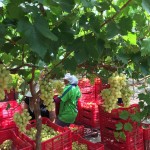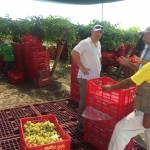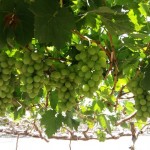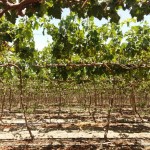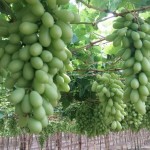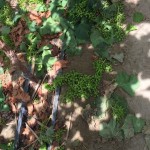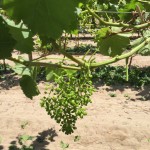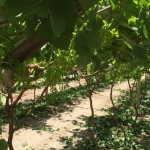California’s Labor Shortage & Rising Production Costs
Posted on July 26th, 2018
The opening of the California table grape and stone fruit season is already posing challenges as growers contend with extreme temperatures, rising production costs and labor shortages. With a heatwave topping 109 degrees, labor crews are being forced to cut their workday short and exit the fields by noon. Growers throughout the agricultural sector are competing for labor crews as the pool of able bodied workers continues to decline. According to one grower we spoke with the median age of their work force is between 45-60 years old and the younger generation of immigrant workers has shown little desire to enter into field work.
Similarly, Governor Jerry Brown signed legislation raising California’s mandatory minimum wage to $15 an hour by 2022. California saw its first increase in January 2017 to $10.50 an hour and again in January 2018 to $11 an hour. Raising the minimum wage for California farm workers will have sweeping consequences and growers will likely look towards mechanization to keep costs down. Nearly 60% of the nation’s produce is grown in California and increased production costs could shift hundreds of thousands of acres of current and future California farmland to other states and countries.
FSMA Compliance Dates Creeping-Up on Growers and Importers
Posted on December 18th, 2017
New FSMA guidelines establish mandatory, minimum standards for the safe growing, harvesting, packing, and holding of fruits and vegetables grown for human consumption. These standards are designed to work effectively for food safety across the wide diversity of produce farms. Growers, shippers and importers will be held to standards designed to reduce the presence of dangerous bacteria in the food supply, with the goal of reducing the number of illnesses caused by contaminated produce.
FSMA is a very complicated statute, one that has been subject to numerous articles, treatises, analysis and multiple revisions by the FDA. Wading through and organizing the all of the data can be confusing and overwhelming, but with the compliance date edging closer, it must be a top priority for everyone in the produce industry. There seems to be an industry disconnect between Global GAP certifications and the new produce safety rules established by FSMA. Currently, there are no water quality standards required to achieve Global Gap certification. This will be the main focus for growers and importers as the new Food Safety Modernization Act will have a zero tolerance for water contaminants.
Grower Spotlight: Bari Produce
Posted on April 10th, 2017
Partnering with the best table grape and stone fruit growers gives Direct Source Marketing the competitive edge in providing our customers the best quality fruit and service in the industry. Bari Produce based out of Madera, California was founded by Frank Logoluso and was created to supply the highest quality fruit to the US market. The Bari label was created over 60 years ago and is reserved only for the most premium fruit in terms of size, quality and taste. We talked with Justin Bedwell, president of Bari Produce, about the upcoming 2017 apricot season to get a sense of the crop and what we can expect this spring.
La Nina weather conditions brought significant rain to California this winter, which affects many aspects of tree growth and production. The crop looks to be about 7 days behind last season, but last year was significantly early in comparison to previous years. He explained that this year apricot volumes will be light because temperatures didn’t dip low enough to induce proper dormancy cycles in the trees. On the upside lighter fruit produces much bigger sizing and Bari Produce is expecting excellent quality on larger fruit. Less supply will mean higher FOB’s and labor costs are expected to rise as well with California’s minimum wage increase. Every aspect of production including box cost, transportation and packing has increased and the industry should anticipate prices to reflect these new cost additions. The 2017 California apricot season will begin the last week of April and expectations are for excellent quality right out of the gate. Call Direct Source Marketing for promotional pricing on exceptional fruit from trusted growing partners like Bari Produce.
Peruvian Floods Threaten Agricultural Infrastructure
Posted on March 20th, 2017
Seventy five people have been killed and over 100,000 left homeless after a series of torrential downpours caused havoc along Peru’s Pacific coast. The intense rains are the most severe in the last two decades and more showers are forecasted in the near future. The rainy season has delivered 10 times more rainfall than usual and a state of emergency has been declared in half the country with armed forces deployed to help police maintain public order. Agriculture is one of Peru’s largest exports and the flooding and mudslides are disrupting transportation and the industry as a whole.
The northern grape growing region of Piura has been hit harder than most with reports of roads being washed away completely. Many vineyards are currently under water but the long term damage won’t be fully known until the waters recede. Michael Horney of Peru Agro Trade said, “We will have to wait until after the rains have passed to asses the full damage to the transportation and agricultural infrastructure. It’s too early to speculate but we know that roads and highways throughout the country will need to be repaired and some even rebuilt.” We can only hope that no more lives are lost and that the extreme weather will soon come to an end.
Hurry Up and Wait
Posted on March 6th, 2017
California is the nation’s largest producer of strawberries with over 2.5 billion pounds harvested every year. Oxnard and Santa Maria are unique coastal environments with moderate winter temperatures perfect for strawberry cultivation. Warm and mild days combined with overcast cool nights are an ideal combination for growing strawberries. The region typically experiences only light precipitation during the month of February, which is ideal since rain is one of the largest determining factors in delaying crop maturation. This year’s La Niña weather conditions have increased precipitation in both regions and throughout the state. According to Wunderground Weather, Oxnard received only 8.13 millimeters of precipitation in February 2016 compared to 183.64 millimeters in February of 2017. Such a drastic increase in rainfall has severely hindered fruit maturation and it could be another 2 weeks before the crop fully comes online. The weather for this week looks to be very good with clear skies forecasted through the weekend. Growers and retailers are both patiently waiting in anticipation for this year’s crop to finally start to produce.
Rain Rain Go Away
Posted on February 20th, 2017
Rainfall has been scarce across California in recent years but there has been no shortage of it over the past few months. Several areas in northern California, including the Sacramento River farming region, have already exceeded their annual water year totals. The latest U.S. Drought Monitor shows that a quarter of the state, mostly in southern California, remains in exceptional drought. Snowpack levels have surged and many reservoirs throughout the state are overflowing with much needed water for the coming agricultural year. Several strong storms have brought heavy rainfall, ground saturation and flash floods and wet conditions are starting to negatively impact many agricultural commodities throughout the state.
California produces a sizable majority of many American fruits, vegetables and nuts and this winter’s heavy storms are creating significant problems for growers throughout the state. Walnut, almond and stone fruit growers are concerned that the persistent cold, wet weather brought on by La Niña might dampen pollination activity and potentially trigger lower crop yields. Strawberry growers in the central and northern growing regions are being inundated with winter showers that are delaying the start of the California season. Many other commodities are being held up by muddy fields and heavy showers preventing laborers from beginning harvest. Continued storms are forecasted through the month of February that could potentially exacerbate the problem. Growers in the state are doing their best to mitigate damage in hopes that the additional moisture will help spur plant growth.
Flash Floods Rush Through Peruvian Grape Growing Region
Posted on January 30th, 2017
Direct Source Market Packing First Crimsons and Sugraones
Posted on December 27th, 2016
Agro Direct, a division of Direct Source Marketing, is truly excited to be packing its first seedless grapes from our vineyards in Ica, Peru. Bill Hargett, president of Agro Direct said, “Our overall quality and size is outstanding for an early vineyard and we are very optimistic for next season. To see these types of results the first year at 20% production is a testament to our agronomy team and the partners who’ve helped up reach this point.” With a projected crop of 80,000 boxes next year, Direct Source Marketing has positioned themselves with a vertically integrated program giving us a significant advantage in the marketplace.
Grower Spotlight: Rafael Meza
Posted on October 31st, 2016
Camet Trading was established more than 15 years ago and continues to be one of the most respected Peruvian table grape export companies in the industry. Direct Source Marketing goes to great lengths to ensure we source the best growers and exporters in South America to provide our customers with exceptional quality produce. Rafael Meza is one of Camet Trading’s seasoned growers with over 20 years experience in the industry. He overseas operations of not only premium-packed Peruvian table grapes but also avocados, chiles, mangos and asparagus. Partnering with the best growers and packers gives Direct Source Marketing the competitive edge in providing our customers the best quality fruit and service in the industry. We look forward to continued growth and partnership in the years to come with Camet trading and Rafael Mezza.
Direct Source Marketing Vineyard Update
Posted on October 21st, 2016
Technology in agriculture creates advances in order to produce a better eating grape, higher yields and protection from disease and predators. Pesticides and other chemical sprays are an effective preventative measure used to ensure a healthy and productive vineyard. Industrial sprayers have been used since the late 1800s as the primary vehicle used to coat plants with chemical agents. The conventional spraying machine has remained largely unchanged since it was introduced. Cutting edge technology called electrostatic spraying has revolutionized this facet of the chemical application. The process atomizes the pesticides and gives them a positive charge producing droplets 900 times smaller than those of convention sprayers. Studies have shown 300% better spray penetration.
We’ve seen a measurable increase in plant coverage while using more than 50% less chemicals in our vineyard. With smaller droplets and more aerated spraying, chemicals don’t collect at the bottom of our grape bunches which can sometimes lead to discoloration. Our vineyard located in Ica, Peru is 60-75 days away from harvest and progress has been rapid. Phase 1 of our Sugraone and Crimson Seedless lots will be arriving to the US market in January 2017. We continually seek new technologies and growing techniques to produce the best quality table grape for our customers.


